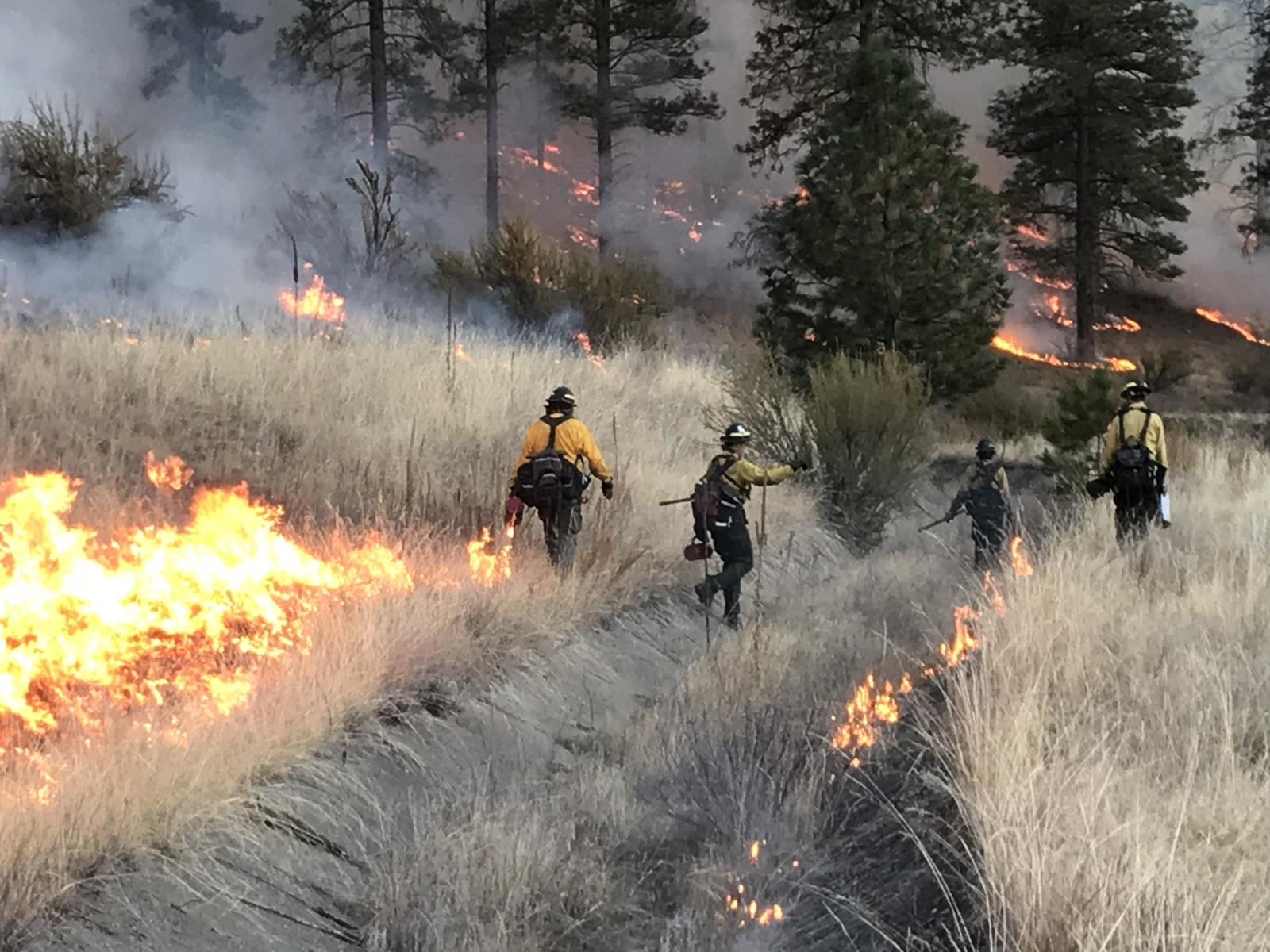Photos
Click to display full size or right-click to save to your device.
ARCHIVED NEWS RELEASE
This document is provided for archival purposes only. Archived documents
do not reflect current WDFW regulations or policy and may contain factual
inaccuracies.
News release April 5, 2021
Matt Eberlein, (509) 429-4236
Staci Lehman, (509) 710-4511
SPOKANE- Annual prescribed burns on Washington Department of Fish and Wildlife (WDFW) lands in eastern Washington are planned to start in April, as conditions allow. Controlled fire reduces the risk of wildfire and improves habitat for animals such as deer, elk, and bighorn sheep.
Prescribed fire is a WDFW forest management practice that burns off accumulations of vegetation and logging debris to create a more healthy forest, both which reduce the risk of high-intensity wildfires that destroy wildlife habitat and devastate communities, like the wildfires that swept through eastern Washington in September of 2020.
“Conducting these prescribed fires helps us to preserve ecosystems, restore nutrients, and leads to more desirable plant growth in the future,” said WDFW Lands Division Manager Cynthia Wilkerson. “In 2021, we’re planning to treat 2,700 acres of WDFW-managed public lands with prescribed fire, or restoration fires, as we sometimes call them. With WDFW lands often located in critical mid-elevation locations close to communities, this work is particularly important to protect habitats and public safety.”
WDFW manages one million acres of public lands and operates two prescribed fire management teams, including five full-time foresters and 18 burn-team members.
Prescribed fires in the following areas will begin in the coming month, weather permitting:
- Sherman Creek Wildlife Area, 524 acres in Ferry County, 10 mile west of Kettle Falls
- Rustlers Gulch Wildlife Area, 523 acres in Pend Oreille County, 15 miles southwest of Newport
- Methow Wildlife Area, 248 acres in Okanogan County, 10 miles northeast of Winthrop
- Colockum Wildlife Area, 500 acres in Chelan County, 10 miles southeast of Wenatchee
- Oak Creek Wildlife Area, 90 acres in Yakima County, 15 miles west of Naches
- Grouse Flats Wildlife Area, 400 acres in Asotin County, 40 miles southwest of Clarkston
- 4-O Wildlife Area, 387 acres in Asotin County, 45 miles southwest of Clarkston.
Additional burns on department-managed lands in eastern Washington could be announced as conditions allow. Signs will be posted in advance of each burn to inform recreationists about the fires.
Public safety is a major consideration for the controlled burns. They are monitored continuously until out. And, while crews burn when conditions are favorable, smoke can still impact visibility. People living, working or recreating in areas where burning is taking place are asked to keep an eye out for fire equipment and personnel and slow down if experiencing reduced visibility on roadways.
By actively managing lands, restoring habitats, and preserving wild places, WDFW serves as stewards for Washington’s natural places, protecting the state’s land and water for its human and wildlife populations.
The Washington Department of Fish and Wildlife works to preserve, protect and perpetuate fish, wildlife and ecosystems while providing sustainable fish, wildlife, and recreational and commercial opportunities.
